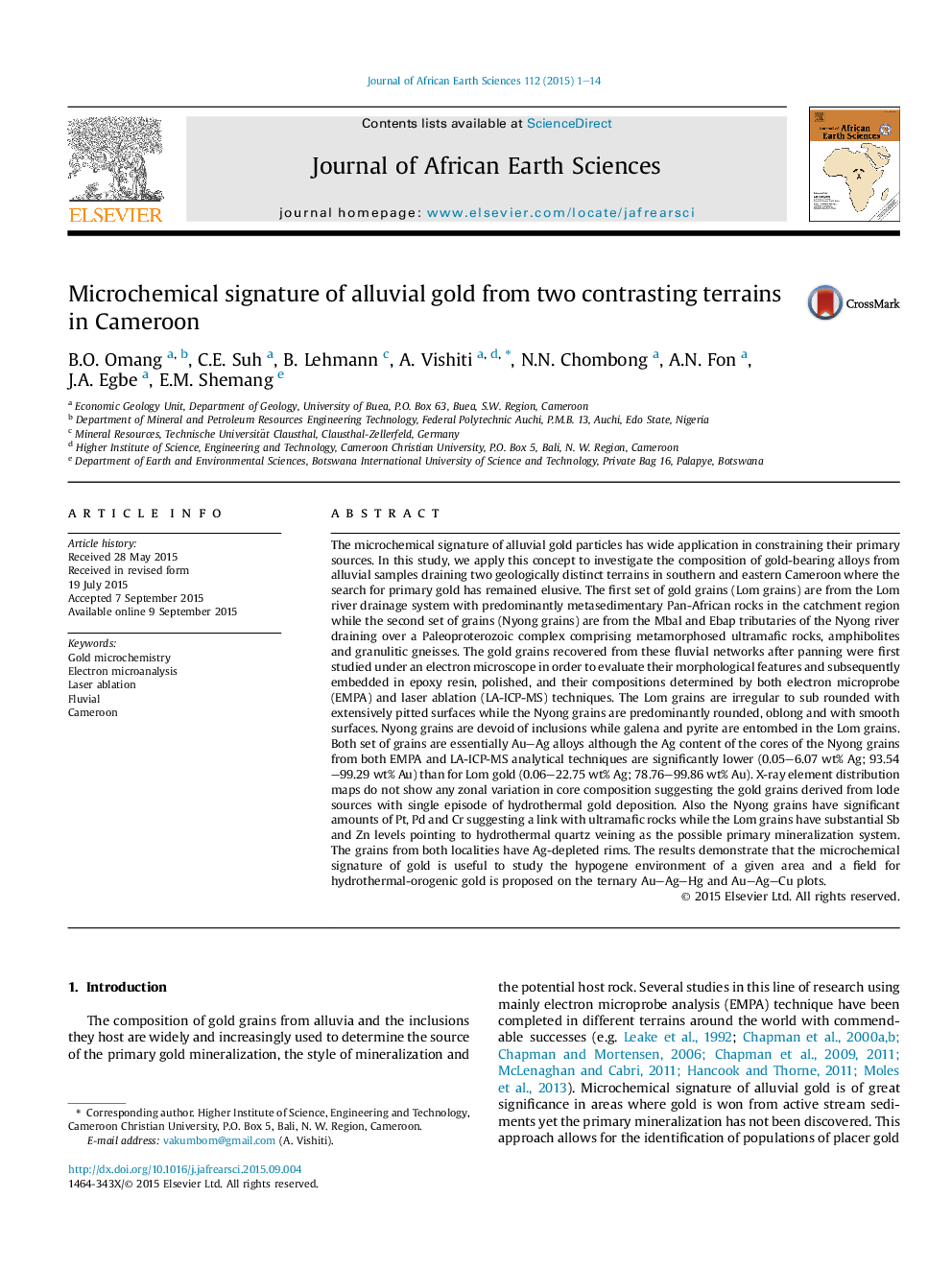| کد مقاله | کد نشریه | سال انتشار | مقاله انگلیسی | نسخه تمام متن |
|---|---|---|---|---|
| 4728366 | 1356450 | 2015 | 14 صفحه PDF | دانلود رایگان |
• Lom gold is hydrothermal/orogenic type 4 Au–Ag alloy with sulfide inclusions.
• Nyong gold includes type 2 Au–Pd alloys with elevated Pt and Cr contents.
• Combined EMPA and LA-ICP-MS data identify different gold populations.
• Gold from both sites derived from single ore-forming event.
• Lom hypogene gold was transported as bisulfide complex.
The microchemical signature of alluvial gold particles has wide application in constraining their primary sources. In this study, we apply this concept to investigate the composition of gold-bearing alloys from alluvial samples draining two geologically distinct terrains in southern and eastern Cameroon where the search for primary gold has remained elusive. The first set of gold grains (Lom grains) are from the Lom river drainage system with predominantly metasedimentary Pan-African rocks in the catchment region while the second set of grains (Nyong grains) are from the Mbal and Ebap tributaries of the Nyong river draining over a Paleoproterozoic complex comprising metamorphosed ultramafic rocks, amphibolites and granulitic gneisses. The gold grains recovered from these fluvial networks after panning were first studied under an electron microscope in order to evaluate their morphological features and subsequently embedded in epoxy resin, polished, and their compositions determined by both electron microprobe (EMPA) and laser ablation (LA-ICP-MS) techniques. The Lom grains are irregular to sub rounded with extensively pitted surfaces while the Nyong grains are predominantly rounded, oblong and with smooth surfaces. Nyong grains are devoid of inclusions while galena and pyrite are entombed in the Lom grains. Both set of grains are essentially Au–Ag alloys although the Ag content of the cores of the Nyong grains from both EMPA and LA-ICP-MS analytical techniques are significantly lower (0.05–6.07 wt% Ag; 93.54–99.29 wt% Au) than for Lom gold (0.06–22.75 wt% Ag; 78.76–99.86 wt% Au). X-ray element distribution maps do not show any zonal variation in core composition suggesting the gold grains derived from lode sources with single episode of hydrothermal gold deposition. Also the Nyong grains have significant amounts of Pt, Pd and Cr suggesting a link with ultramafic rocks while the Lom grains have substantial Sb and Zn levels pointing to hydrothermal quartz veining as the possible primary mineralization system. The grains from both localities have Ag-depleted rims. The results demonstrate that the microchemical signature of gold is useful to study the hypogene environment of a given area and a field for hydrothermal-orogenic gold is proposed on the ternary Au–Ag–Hg and Au–Ag–Cu plots.
Journal: Journal of African Earth Sciences - Volume 112, Part A, December 2015, Pages 1–14
